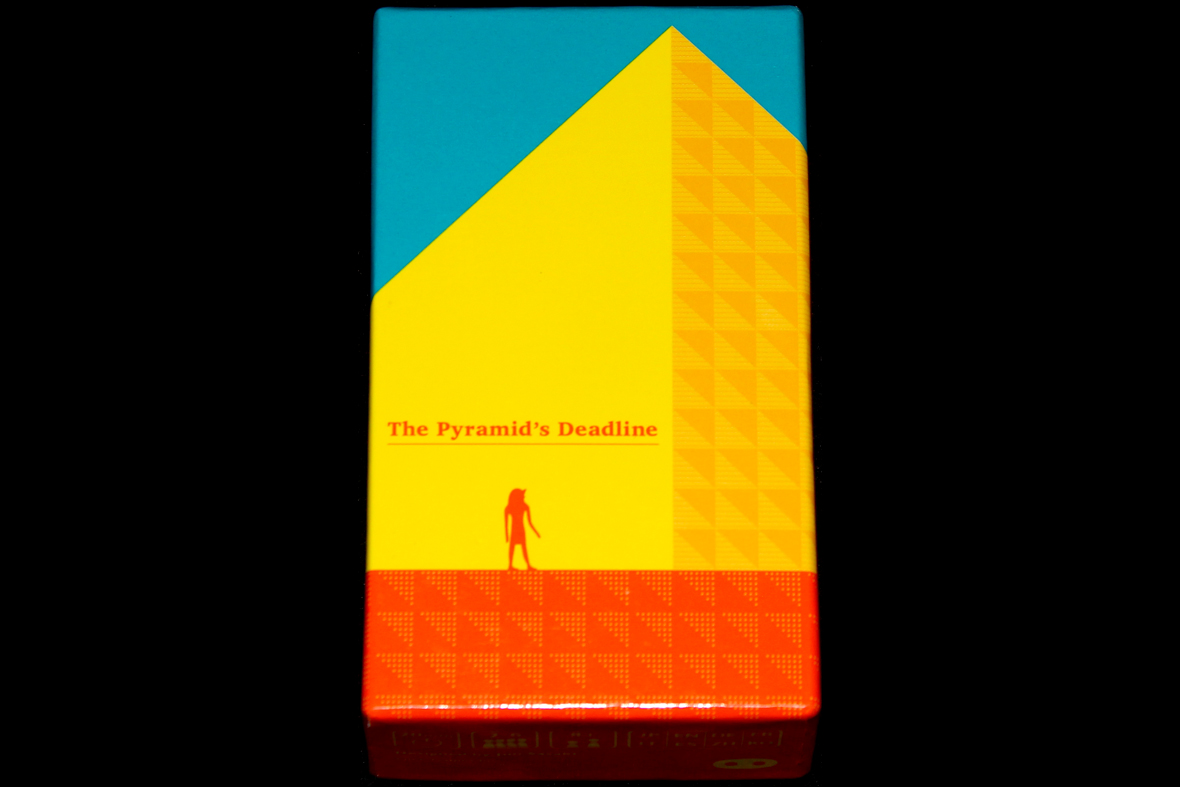
Base price: $22.
3 – 6 players.
Play time: ~20 minutes.
BGG Link
Buy on Amazon (via What’s Eric Playing?)
Logged plays: 6
I don’t have a lot of Egypt-themed games, other than Valley of the Kings, which I still need to review, so I’ll get to that eventually (or already have; the problem with having a queue of games to review is that you end up in weird temporal zones where you write in future tense about something that ends up being past tense). But you’re not here to read about my tense issues.
In The Pyramid’s Deadline, the Pharaoh is dying. Sad. On the plus side, he’s sent for the most skilled architects and builders in the land to build his tomb (or build a version of his tomb). If any player is successful, they will have the honor of seeing the Pharaoh buried in the tomb they designed. If a player takes too long or fails, well, the Pharaoh has instructed that the tomb they designed will be their tomb. Rough. Can you build the Pharaoh an impressive burial site? Or are you literally digging your own grave?
Contents
Setup
Simple game to set up. First, set aside the Pyramid tiles:
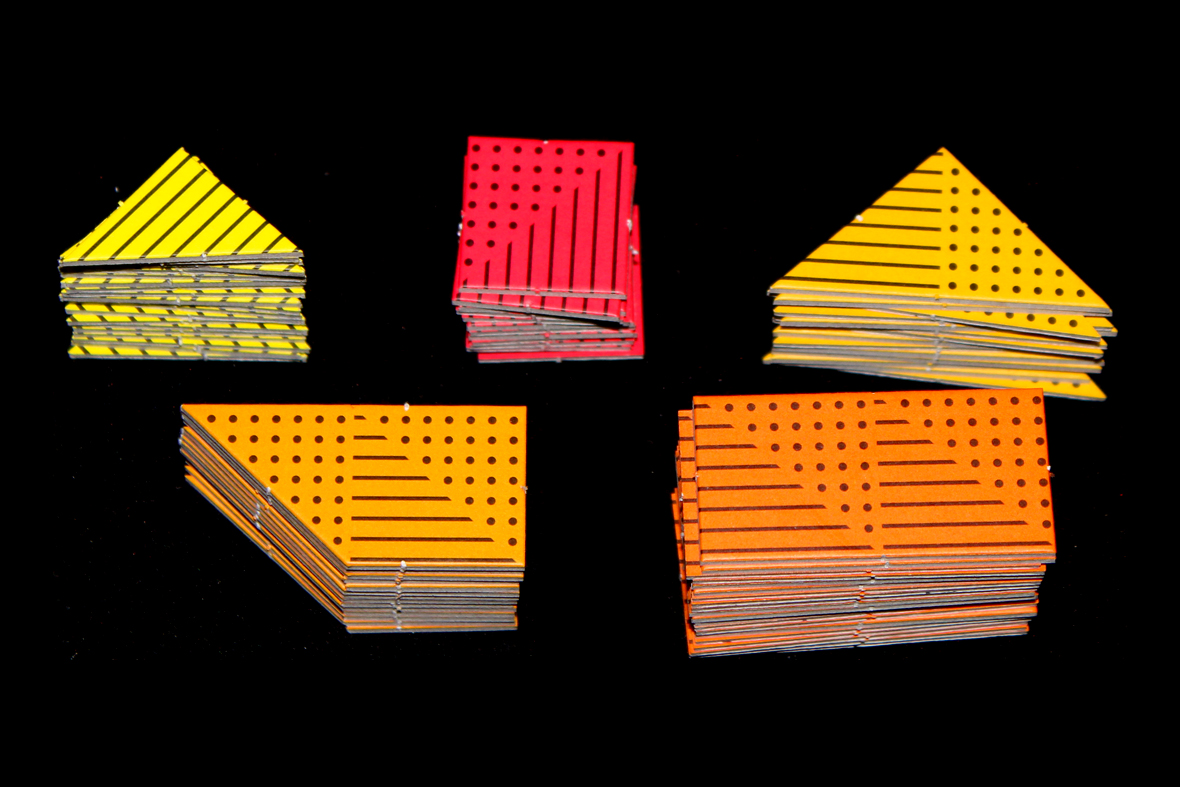
And give each player a small yellow triangle. That’ll be their extra tile.
Set the correct number of square stones in a line in view of all players, based on your player count:
- 2 – 3 players: 6 squares
- 4 players: 8 squares
- 5 players: 10 squares
- 6 players: 12 squares
Next, grab the dice:
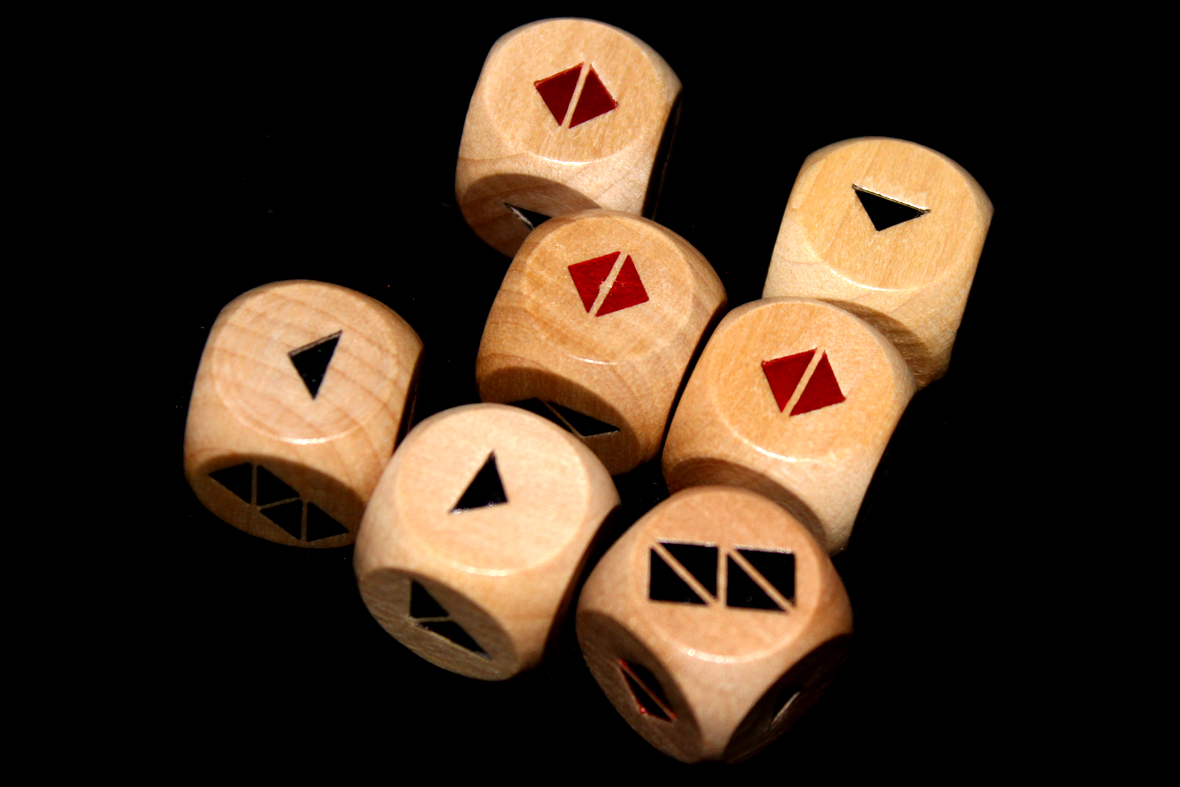
And use the correct number of dice, based on your player count:
- 2 – 3 players: 7 dice
- 4 players: 5 dice
- 5 players: 6 dice
- 6 players: 7 dice
Once you’ve done that, give every player a big orange rectangle — that will be the burial chamber. You’re ready to start!
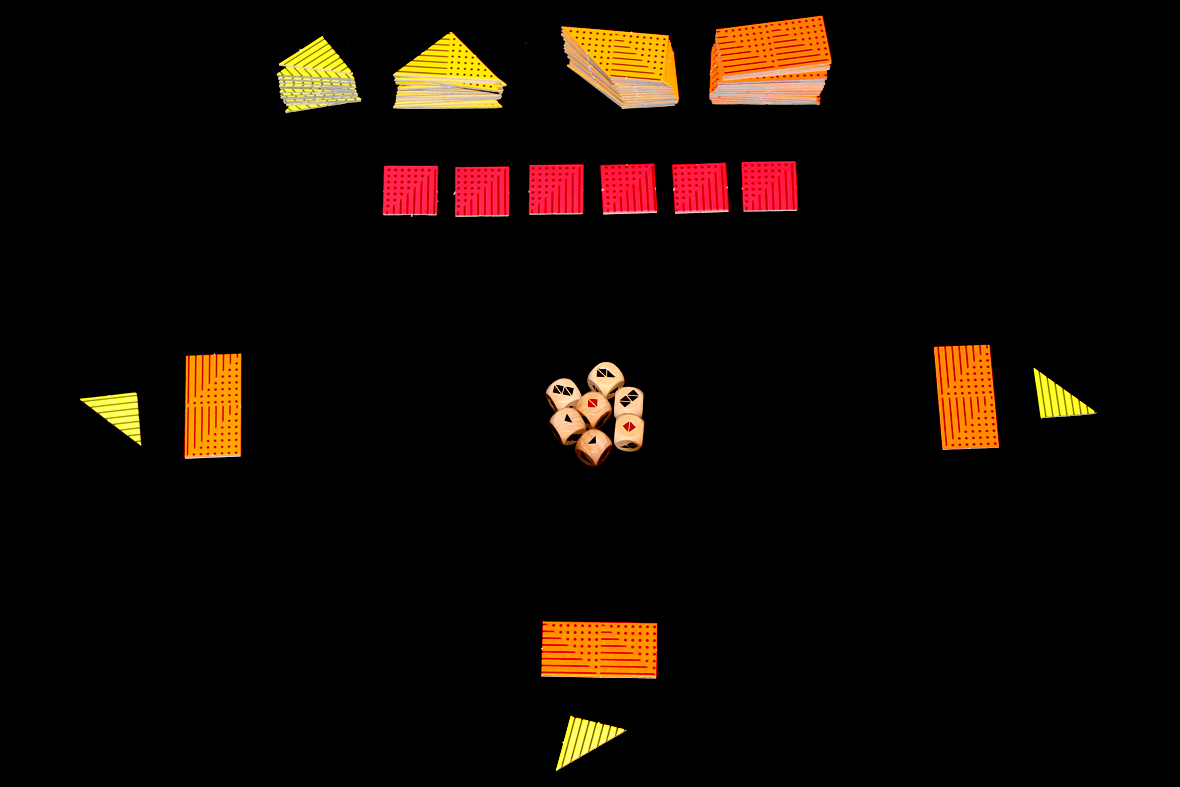
Gameplay
The gameplay here is a bit reminiscent of Deep Sea Adventure or Dragon Slayer in that it’s a press-your-luck game, but you’re pressing your luck to try and build a great pyramid. So, what happens is each turn one player is the Supplier — they roll all of the dice and players get to see which types of tiles are available to them, this round.
After they roll, players draft the dice (a la Sagrada or Roll Player) and each take a die in turn. If there are more dice than active players, keep taking one die on your turn (in turn order) until there is only one die left. This means at 2 – 3 players you will get more than one die per round (and once players start dropping out, you might get more than one die per round).
As soon as you take a die, you take a matching stone. You will also have an extra stone that you started the game with; whenever you take a stone, you may swap it for your extra stone and play that one instead. Regardless of which stone you play, you take the stone and add it to your pyramid, following these rules:
- If there are no matching stones remaining, take a square stone.
- If you cannot legally place your tile, set it aside. It is worth -2 points at the end of the game.
- Every stone must touch at least one side (and one corner) of another stone. This just means you should place stones in a way that looks like it makes sense.
- Every stone must be placed such that it doesn’t have any empty space below it. No gaps! Those stones are heavy.
- If there are stripes on a stone, the stone must be placed such that the stripes are horizontal or vertical, not diagonal. This is just to dictate how the triangle pieces should be placed.
- You may not place any stones under the burial chamber. You already built that! And it’s super heavy. Actually, on that note:
- Once you have placed a stone, you may not move it on subsequent turns. Again, super heavy.
That means that some of these placements are invalid. Can you guess which?
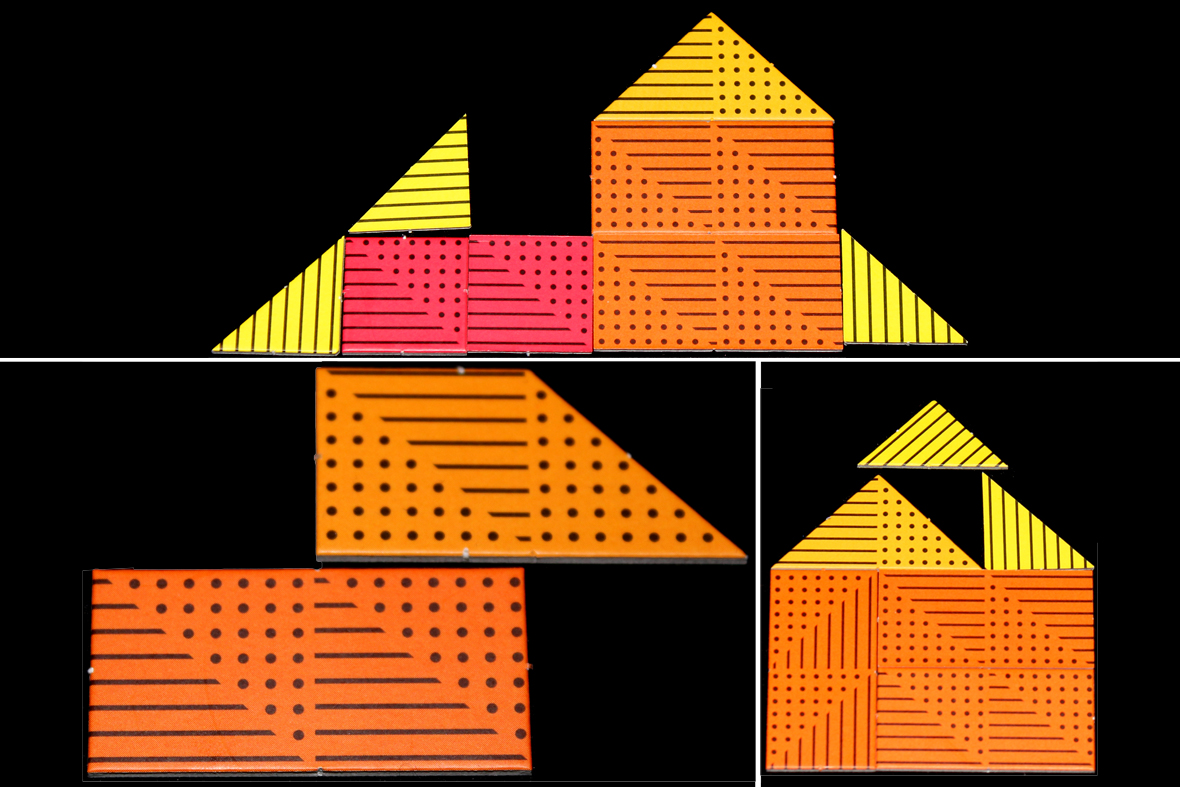
Once you’ve placed your stone, you may announce that you’re done pushing your luck and you’ve completed your pyramid. How do you know if your pyramid is done?
- No vertical wall is more than one square high. This just means you don’t have super tall walls. The pyramid itself can be super tall, you just can’t stack a bunch of squares up and then cap it with a triangle. It has to be gently sloping.
- Every capstone is diagonal. You can have as many caps as you want (though you’d prefer to keep that number low), but they need to be diagonal. No flat-topped pyramids allowed!
That means that some of these pyramids are invalid, as well. Can you guess which?
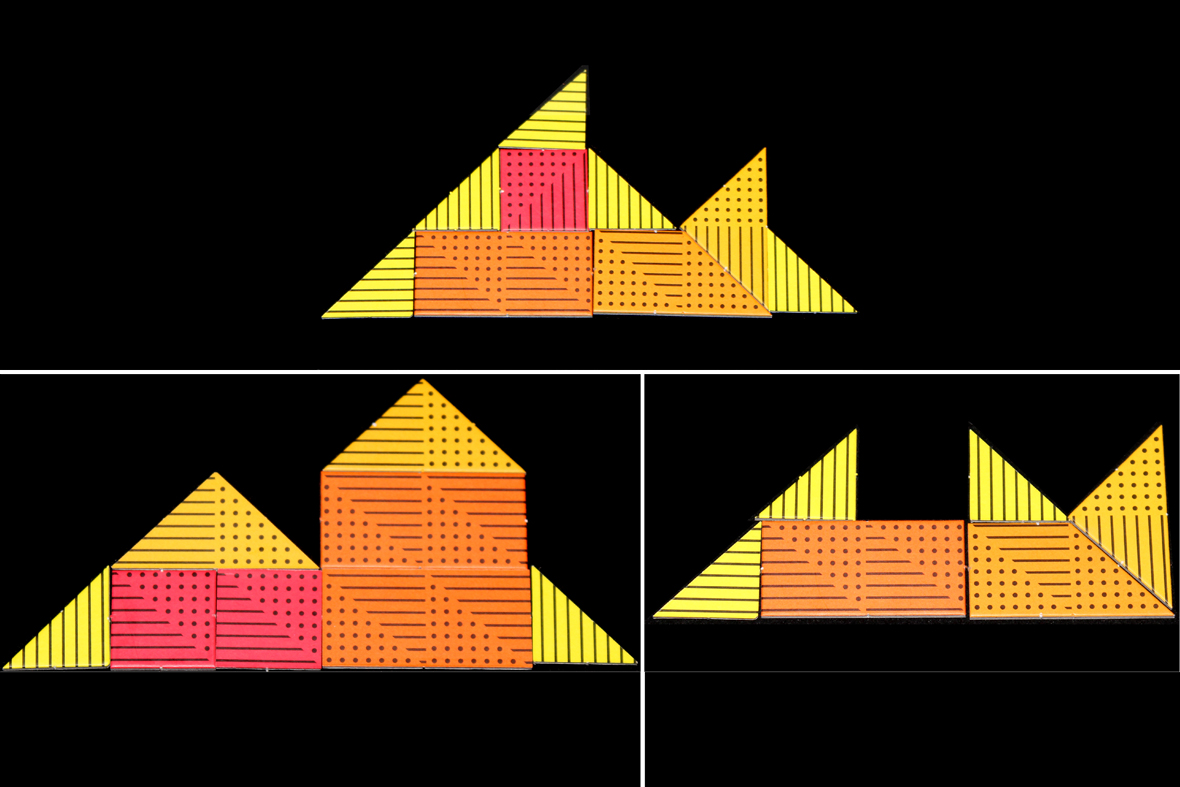
If you complete your pyramid, you’re done for the rest of the game. However, the number of dice in the pool doesn’t change. This means that some players will get extra dice on their turn.
Once there is only one die left, the player to the left of this round’s Supplier becomes the new Supplier and rolls the dice again to start a new round.
Game End
Play continues until one of two things happens:
- All players have completed their pyramids.
- A player needs to take a square stone and no square stone is left.
In the latter case, that player stalled too long and the Pharaoh died! The townsfolk are so angry that they immediately bury that player in their own tomb. Sad. That player loses.
For everyone else, if the game ends and you haven’t finished your Pyramid, you score zero points. Should have gone faster, I guess.
For the surviving players, you score your pyramid by counting how many square stones it is wide and how many square stones it is tall. Multiply those two and then subtract one for every capstone you have. You don’t want a super-pointy pyramid! Like I said, gently sloping. Don’t forget to subtract two if you have any tiles you couldn’t use.
The player with the highest score wins!
Player Count Differences
The real difference at higher player counts is that a lot of players get turns before you do, so you run a very real risk of taking a lot of square stones if you’re going later in the player order for a bit. You also might roll more square stones since there are more dice. This is somewhat mitigated by the fact that there are more square stones in play, but, it’s still hard. I wouldn’t say I have a strong preference for this game at any player count. It’s a bit lucky, but it’s a fun, short little game. At two or three players the drafting is a bit more intentional since you get to choose multiple dice. You can have a bit more of a strategy.
Strategy
It’s a press-your-luck game, so the strategy is occasionally just “hope for the best”, but you know.
- Keep an eye on the squares. If there aren’t many left, it might be time to be done. Or not! You might not roll any. Who knows.
- Try to always stay one step away from finished. If you can do that and keep the tile you need to finish your pyramid as your extra tile, then you can’t automatically lose. You might … not win, though.
- Sometimes it’s best to just take a low-scoring pyramid. If you take a low-scoring pyramid, then there’s an extra die in the pool and you’re already on the board with points. That might force everyone else out, causing you to win by default.
- Keep an eye on your opponents’ scores. If one of your opponents has completed a higher-scoring pyramid than yours, then you need to keep going, otherwise you lose. Plus, you
- Don’t tell opponents that they’re definitely going to lose. If they don’t notice that they’re out of luck, well, you might be able to get another turn before they have to take the square (giving you enough time to finish). Otherwise, you might bait them into ending the game early and causing you both to lose. Not ideal.
- If you have the leeway, take something your opponent needs. Forcing them to place a tile they don’t want or ruining their extra tile with a tile they don’t want is great for you. Just don’t completely ruin your pyramid in the process.
Pros, Mehs, and Cons
Pros
- The box is super cool. Again, Oink is consistently good with this.
- Fun mechanics. I really enjoy tile-laying games, and the press-your-luck element is pretty nice.
- Plays pretty quickly. It’s a great lunch game; most Oink Games are.
- Highly portable. I mean, this is generally true for Oink Games as well, but I always appreciate it. It’s nice that there’s such variety in a tiny box.
- Has a nice bit of tension. There’s some stress when you’re not sure if you’re going to be able to finish your pyramid. Just play smart.
Mehs
- A lot of rules about pyramid construction. It makes it a bit opaque to new players, and in a game where one mistake can cost you the game, I wish the rules about how pyramids had to be constructed were a bit more simplified / streamlined.
- The symbols on the tiles confuse some players. It’s because the tile symbols are subdivded into triangles, for some reason, whereas the tiles themselves are not. I’m not sure why that happened.
Cons
- You can get put in an unwinnable situation pretty easily. If there’s a bad die roll and you’re not prepared, you’re just done. It’s a bit frustrating.
- You can get ruined by other players. If I’m already going to lose when I take the last square stone on my next turn, why not just take it now? I drag more people down with me, after all. This is something you should be careful of when playing — one player can end the game, and there’s not really a point to not doing so if you’ve already mathed out that you’re going to lose.
Overall: 7.5 / 10
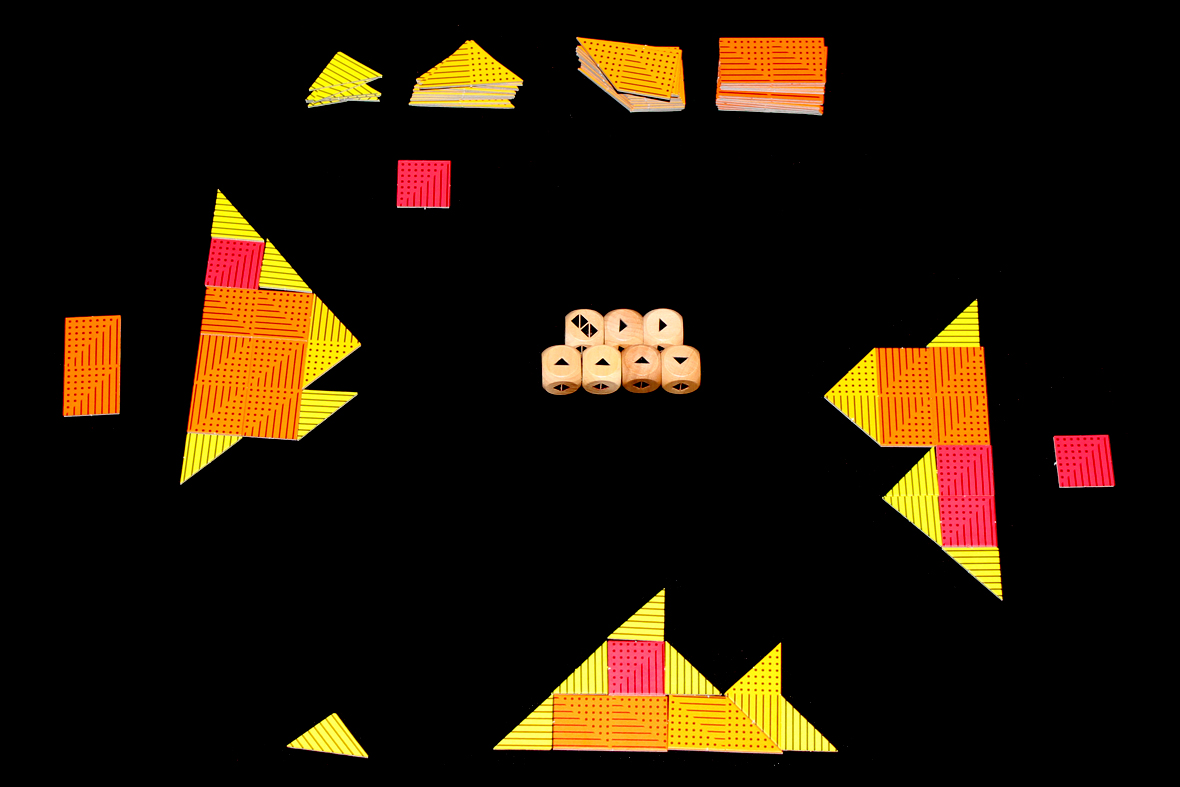
Overall, I think The Pyramid’s Deadline is a fun little game! Some of the mathy / rulesy parts kind of confuse new players, but at its core it’s a neat little game of tile placement and press-your-luck dice drafting, making for a neat combination that isn’t too similar to anything I’ve played before. It’s a game that I think will appeal to a wide variety of players, and thankfully at a 2 – 6 player count, it can support that variety, as well. It’s got a few hiccups to it, but overall I think it’s a solid game and I enjoy it. If you’re looking for another fun Oink game, I’d check this one out!